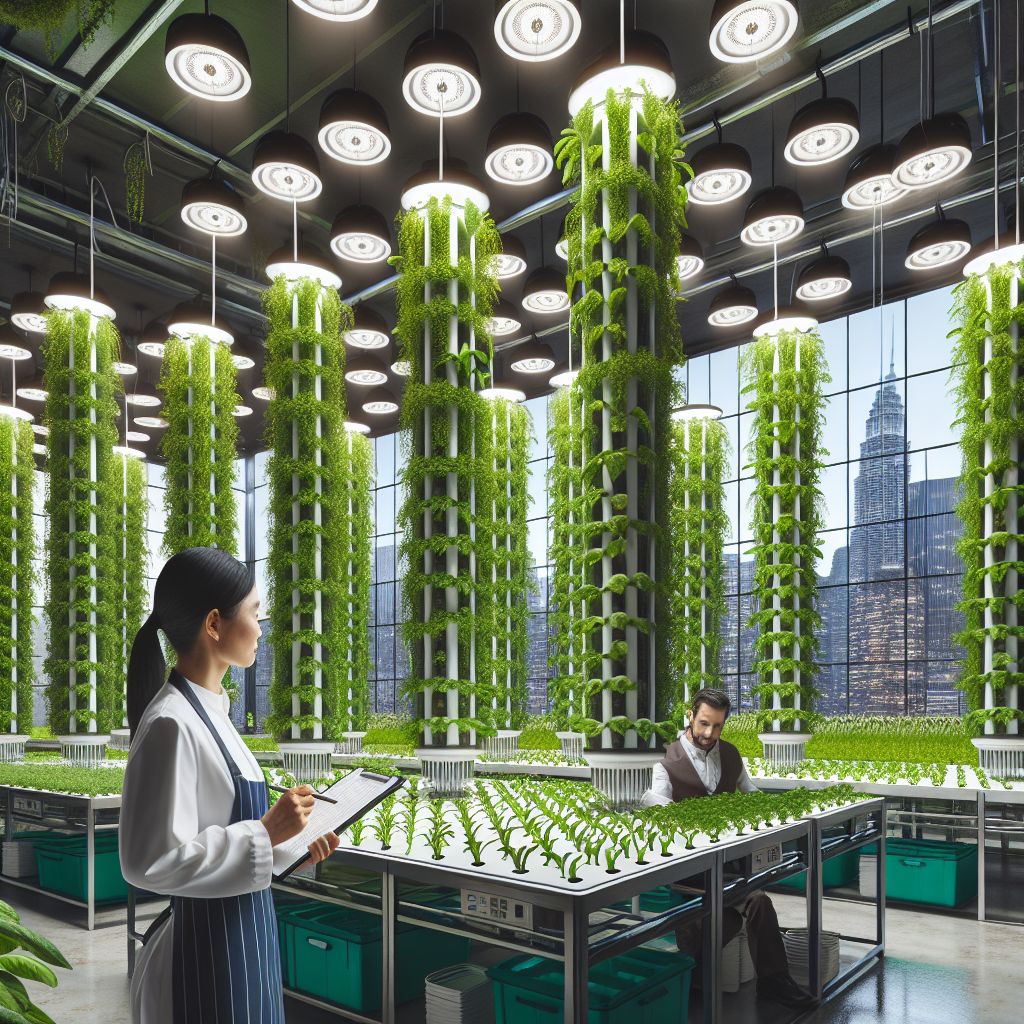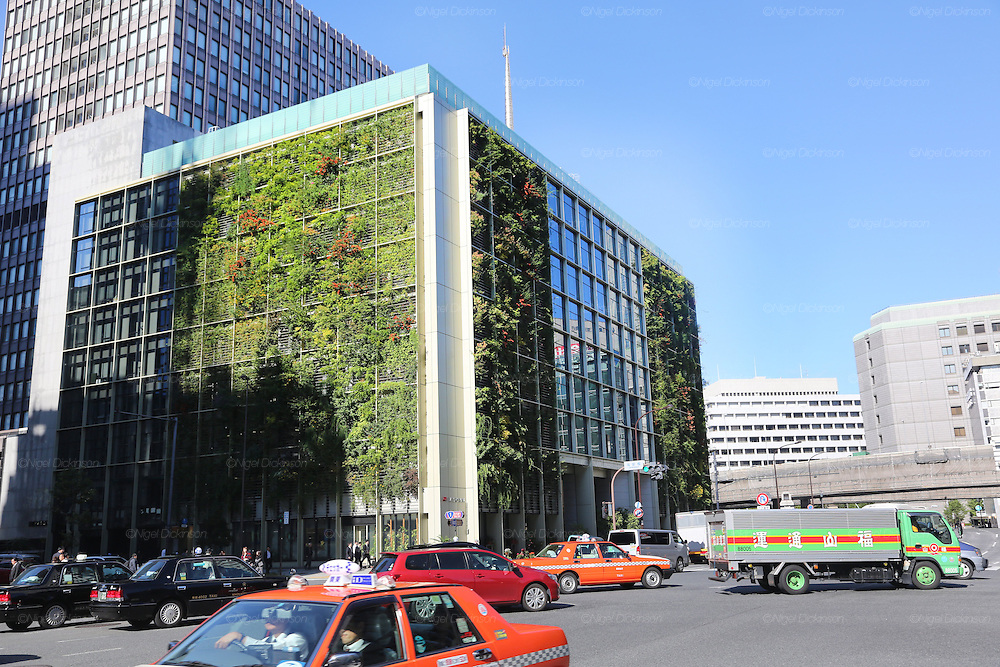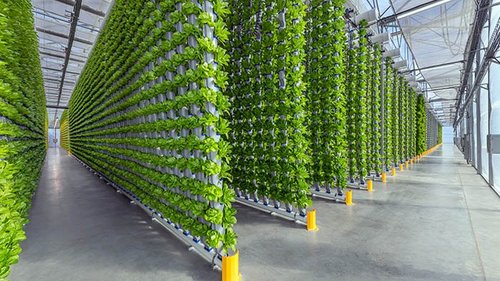Key Takeaways
-
Urban hydroponic farming is highly space-efficient, making it ideal for city environments with limited land.
-
This method allows for year-round crop production, providing fresh produce regardless of the season.
-
Hydroponic systems use up to 90% less water than traditional farming methods.
-
Faster growth rates and higher yields are achievable compared to soil farming.
-
By reducing the need for pesticides, hydroponics offers a healthier, more sustainable way to farm.
Benefits of Urban Hydroponic Farming
Urban hydroponic farming offers a revolutionary approach to growing food in densely populated areas. It utilizes a method that doesn’t require soil, instead using nutrient-rich water solutions to nourish plants. This approach is not only innovative but also addresses many challenges faced by traditional farming, especially in urban settings.
Space Efficiency in City Environments
-
Utilizes vertical space effectively, allowing for more plants in a smaller footprint.
-
Can be set up in unused urban spaces such as rooftops, basements, and balconies.
-
Ideal for cities where land is scarce and expensive.
Most importantly, urban hydroponic farming maximizes the use of available space. In cities where every square meter is precious, the ability to grow vertically is a game-changer. For instance, imagine a rooftop garden that grows fresh vegetables all year round without taking up much space. This is the power of hydroponics.

Besides that, hydroponic systems can be tailored to fit any space, from small-scale setups in apartments to larger commercial operations. This adaptability makes it accessible to anyone interested in urban farming, regardless of their living situation.
Year-Round Crop Production
One of the standout benefits of hydroponic farming is the ability to grow crops all year round. Traditional farming often depends on the seasons, but hydroponics eliminates this dependency. By controlling the growing environment, including light, temperature, and nutrients, farmers can cultivate crops continuously.
This means fresh produce is available even in the dead of winter or the height of summer. Imagine enjoying vine-ripened tomatoes in the middle of January! This capability not only ensures a steady supply of food but also reduces the need to import produce from other regions, thus lowering the carbon footprint associated with transportation.
Reduction of Water Usage
Water scarcity is a growing concern worldwide, and traditional agriculture is a major consumer of this vital resource. Hydroponic farming addresses this issue by using significantly less water. The closed-loop systems recycle water, ensuring that none is wasted.
In fact, hydroponic systems can use up to 90% less water than traditional farming methods. This makes it an environmentally friendly choice, especially in urban areas where water conservation is crucial. By adopting hydroponics, urban dwellers can contribute to sustainable water use while still enjoying the benefits of fresh, homegrown produce.
Advantages of Hydroponic Systems
Hydroponic systems offer several advantages over traditional soil-based farming, making them an attractive option for urban agriculture. These systems not only improve efficiency but also enhance the quality and quantity of the produce.
Faster Growth Rates Compared to Soil Farming
Plants grown hydroponically tend to grow faster than those grown in soil. This is because they receive a constant supply of nutrients, water, and oxygen, which are essential for growth. The absence of soil-borne diseases also means that plants are healthier and can focus their energy on growing rather than defending against pathogens.
For example, lettuce can mature in as little as 30 days in a hydroponic system compared to 60 days in traditional farming. This rapid growth rate means that urban farmers can harvest more frequently, increasing their yield and ensuring a constant supply of fresh produce.
Minimized Pesticide Usage
Because hydroponic systems are often set up indoors or in controlled environments, there is a reduced need for pesticides. The absence of soil eliminates many common pests, and the controlled conditions help prevent infestations.
This not only leads to healthier plants but also produces food that is safer for consumption. By minimizing pesticide use, hydroponic farming contributes to a healthier environment and reduces the risk of chemical exposure for both the farmer and the consumer.
Therefore, by embracing hydroponic farming, urban dwellers can enjoy fresh, pesticide-free produce right at their doorstep.
Mitigation of Urban Heat Islands
Urban areas often experience higher temperatures than their rural surroundings, a phenomenon known as the “urban heat island” effect. This is primarily due to human activities and the abundance of heat-absorbing surfaces like asphalt and concrete. Urban hydroponic farming can help mitigate this effect by introducing more greenery into cityscapes.
Plants naturally cool the air through a process called transpiration, where they release moisture. By increasing the number of plants in urban areas, hydroponic farms can lower local temperatures, making cities more comfortable and reducing the energy needed for cooling buildings.
Promoting Food Security in Cities
Food security is a pressing issue in many urban areas, where access to fresh produce can be limited. Urban hydroponic farming addresses this by providing a local source of fresh food. This not only reduces the reliance on imported produce but also ensures a more resilient food supply chain.
Furthermore, by growing food closer to where it’s consumed, hydroponic farms can reduce food miles, the distance food travels from farm to table. This reduction in transportation not only lowers costs but also decreases the carbon footprint associated with food distribution.
Successful Case Studies of Urban Hydroponic Farms
Across the globe, several urban hydroponic farms have demonstrated the potential of this innovative farming method. These successful case studies serve as inspiration and provide valuable insights for those looking to start their own urban hydroponic farms.
Pasona Urban Farm in Tokyo
Pasona Urban Farm is a remarkable example of integrating agriculture into an urban setting. Located in the heart of Tokyo, this farm occupies an office building, where employees can work amidst lush greenery. The farm grows a variety of vegetables and fruits using hydroponic methods, contributing to the building’s sustainability goals.

Besides providing fresh produce, Pasona Urban Farm also serves as an educational hub, showcasing the benefits of urban agriculture to visitors and inspiring them to consider hydroponics as a viable option for city living.
Gotham Greens in New York City
Gotham Greens is a pioneer in urban hydroponic farming in the United States. Their rooftop greenhouses in New York City produce high-quality greens and herbs, supplying local supermarkets and restaurants. By utilizing unused rooftop spaces, Gotham Greens maximizes urban space efficiency and contributes to the city’s food security.
Their commitment to sustainability extends beyond farming practices, as they also focus on energy efficiency and water conservation. This holistic approach makes Gotham Greens a leading example of how urban hydroponic farming can thrive in a bustling metropolis.
Sky Greens in Singapore
Sky Greens is a vertical farming operation in Singapore that exemplifies the potential of hydroponics in urban environments. By growing vegetables in vertically stacked towers, Sky Greens optimizes space usage and increases production capacity. This method is particularly valuable in land-scarce Singapore, where every square meter counts.
The farm’s innovative approach has garnered international attention and serves as a model for other cities looking to adopt sustainable urban agriculture practices.
Cost and Economic Considerations
While urban hydroponic farming offers numerous benefits, it’s essential to consider the costs and economic implications of setting up and maintaining a hydroponic system. Understanding these factors can help aspiring urban farmers make informed decisions and plan for long-term success. For those interested in urban farming, exploring urban greenhouse gardening tips can provide valuable insights and practices.
Initial Investment and Operational Costs
Setting up a hydroponic system requires an initial investment, which can vary depending on the scale and complexity of the setup. Basic home systems can cost as little as $100, while commercial operations may require tens of thousands of dollars. Key expenses include equipment, lighting, nutrient solutions, and infrastructure. For those interested in advanced systems, exploring innovative greenhouse technologies can provide insights into the latest trends and solutions.
Operational costs, such as electricity and water, are ongoing considerations. However, the efficiency of hydroponic systems often offsets these expenses, as they typically require less water and energy compared to traditional farming methods.
Potential Return on Investment
Urban hydroponic farming can be financially rewarding, particularly when high-value crops like herbs and leafy greens are grown. These crops tend to have shorter growth cycles and higher market prices, providing a quicker return on investment. For more insights into maximizing crop growth, check out these tips for pH level control.
Additionally, by reducing transportation costs and increasing local food production, urban hydroponic farms can enhance profitability and contribute to the local economy.
Government Incentives and Support
Many governments recognize the benefits of urban agriculture and offer incentives and support to encourage its adoption. These may include grants, tax breaks, and technical assistance programs designed to help urban farmers succeed.
It’s worth researching available resources and reaching out to local agricultural agencies to explore potential support for your hydroponic venture.
Challenges and Solutions for Beginners
Starting an urban hydroponic farm can be challenging, especially for beginners. However, with the right guidance and resources, these challenges can be overcome, paving the way for a successful and rewarding farming experience.
Common challenges include understanding the technical aspects of hydroponics, selecting the right crops, and maintaining the system. By educating yourself and seeking advice from experienced growers, you can navigate these hurdles and create a thriving urban farm.
Avoiding Common Mistakes in Hydroponic Setup
Starting a hydroponic farm in an urban setting can be both exciting and daunting. To ensure success, it’s crucial to avoid some common pitfalls that beginners often encounter. These mistakes can lead to inefficient systems, wasted resources, and disappointing yields.
-
Overlooking the importance of pH balance: Regularly check and adjust the pH levels of your nutrient solution to ensure optimal plant growth.
-
Neglecting proper lighting: Ensure your plants receive adequate light, either through natural sunlight or artificial grow lights, to promote healthy development.
-
Ignoring system maintenance: Regularly clean and inspect your hydroponic system to prevent clogs, leaks, and algae growth.
By being mindful of these common issues, you can set up a hydroponic system that thrives in an urban environment. Remember, the key is to monitor your system closely and make adjustments as needed. For more on lighting, check out the importance of light monitoring in greenhouse settings.
Most importantly, don’t be discouraged by initial setbacks. Every mistake is an opportunity to learn and improve your setup. With time and experience, you’ll become more adept at managing your hydroponic farm and reaping its benefits.
Choosing the Right Crops for Your System
Selecting the right crops is essential for maximizing the success of your hydroponic farm. Some plants are better suited for hydroponic systems than others, offering faster growth and higher yields. As a beginner, it’s wise to start with crops that are known to perform well in these environments.

“Plants You Can Grow Without Soil …” from www.edengreen.com
Leafy greens, such as lettuce, spinach, and kale, are excellent choices for hydroponic farming. They grow quickly, require less space, and have high market value. Herbs like basil, mint, and cilantro also thrive in hydroponic systems, providing flavorful additions to your kitchen or local market.
Besides these, consider experimenting with other crops like tomatoes, cucumbers, and strawberries once you gain more confidence and experience. These fruits can be more challenging to grow but offer rewarding results when managed correctly.
Maintenance and Monitoring Recommendations
Regular maintenance and monitoring are vital for the success of your hydroponic farm. By keeping a close eye on your system, you can identify and address issues before they become significant problems.
Check your nutrient solution levels daily and replenish them as needed. Monitor the pH and electrical conductivity (EC) of the solution to ensure your plants receive the right balance of nutrients. Keep an eye out for any signs of disease or pests, and address them promptly to prevent spreading.
Regularly clean your system components, such as reservoirs, pumps, and tubing, to prevent clogs and algae growth. By maintaining a clean and efficient system, you’ll create an optimal environment for your plants to thrive.
Future Trends in Urban Hydroponic Farming
The future of urban hydroponic farming looks promising, with technological advancements and increased interest in sustainable agriculture driving its growth. As cities continue to expand, the need for innovative food production methods will become even more critical.
Hydroponics offers a solution to many challenges faced by urban areas, including limited space, water scarcity, and food security. By embracing this method, urban dwellers can contribute to a more sustainable and resilient food system. For more insights, explore the pros and cons of hydroponic farming.
As more people recognize the benefits of hydroponic farming, we can expect to see increased adoption and integration into urban planning and development strategies.
Advancements in Hydroponic Technology
Technological innovations are continually improving the efficiency and accessibility of hydroponic farming. Automation and smart technology are making it easier for urban farmers to monitor and manage their systems, even remotely.
Advancements in LED lighting and nutrient delivery systems are also enhancing plant growth and reducing energy consumption. These innovations will continue to drive the popularity of hydroponics in urban settings, making it an increasingly viable option for city dwellers.
Integration with Urban Planning and Development
Urban planners and developers are beginning to recognize the potential of hydroponic farming as a means of enhancing food security and sustainability. By incorporating hydroponic systems into new developments, cities can create more self-sufficient and resilient communities.
Community Involvement and Education Programs
Community involvement and education are crucial for promoting the adoption of hydroponic farming in urban areas. By raising awareness and providing resources, we can empower more people to embrace this sustainable method of food production.
Frequently Asked Questions (FAQ)
Urban hydroponic farming may raise several questions for those new to the concept. Here are some common inquiries and their answers to help you better understand this innovative method.
By addressing these questions, we aim to provide clarity and encourage more people to explore the benefits of hydroponic farming in urban environments.
What Crops Grow Best in Hydroponic Systems?
Leafy greens, herbs, and some fruits like tomatoes and strawberries are well-suited for hydroponic systems. These crops tend to grow quickly and offer high yields, making them ideal for urban farming.
How Much Space Do I Need for an Urban Hydroponic Farm?
The space required for a hydroponic farm depends on the scale of your operation. Small systems can fit in a kitchen or balcony, while larger setups may require a dedicated room or rooftop. Hydroponics is highly adaptable, allowing you to tailor your system to fit your available space.
Is Urban Hydroponic Farming Environmentally Friendly?
Yes, urban hydroponic farming is environmentally friendly. It uses significantly less water than traditional farming, requires no soil, and reduces the need for pesticides. By growing food locally, it also decreases the carbon footprint associated with transportation.
Urban hydroponic farming is revolutionizing the way we grow food in cities. By using soilless methods, it allows for efficient use of space and resources, making it ideal for urban environments. This innovative approach not only maximizes yield but also reduces the environmental impact of traditional farming. For more insights into the advantages of hydroponic systems, consider exploring further resources.
